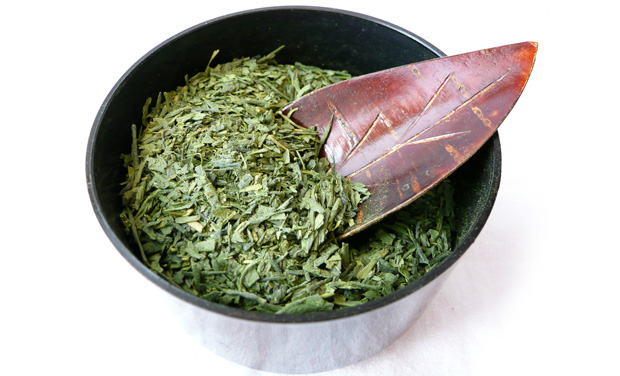by Elisabeth Lambert
It is impossible nowadays not to be aware of the goodness that is green tea. While this evergreen plant has been consumed and celebrated for thousands of years throughout Japan and Asia, it is really only in the last 65 years that green tea has piqued the interest of the West and gone under the microscope. In that time, many advantages to consuming it have been discovered, and scientists realize that this plant holds a lot more medicinal potential than first ever thought.
As well as containing Vitamin C, caffeine and fluoride (yes, green tea is a natural cavity fighter—just don’t add sugar!), green tea is full of polyphenols and falvinoids, which have high levels of antioxidant activity.
In fact, green tea contains more antioxidants than any other tea. To appreciate the specialness of green tea, consumers need to understand the role that antioxidants play in the body. When the cells in our body use oxygen, a by-product known as a free radical is produced as a consequence of this process. Free radicals cause damage at a cellular level and ultimately lead to health and skin issues. Antioxidants act not only to slow and sometimes prevent such damage, but also to repair it.
The specific antioxidants found in green tea can help in minimizing the risks of a plethora of physical ailments, including heart disease, diabetes, cancers, high cholesterol, and slow metabolism. They also play a powerful role in slowing down the effects of sun damage, not by blocking UV rays, but by reducing inflammation and redness. Scientists are now investigating if green tea has a part to play in slowing down the aging process.
While green tea extract capsules are available to buy, the easiest and most enjoyable way to incorporate green tea into your daily life is by drinking it—hot or cold, loose leaf or tea bags. The required daily intake of polyphenols is around 300–400mg, the equivalent of around four cups of green tea per day, and studies have suggested that drinking a cup with each meal may aid with the digestion of fat and assist with weight loss. As a drink (without sugar), it contains no calories.
This wonder tea can also be integrated into your skin care routine. Here are a few simple home remedies to get you started:
Base Preparation:
Boil one cup of green tea leaves with 500ml of water for 20 minutes. Strain leaves and set aside in a sterile container.
This brew will be used as your base for other green tea preparations and
will keep for ten days if refrigerated.
Toner:
Freeze fresh brew as ice cubes. In order to avoid freeze burn, do not apply
ice cubes directly to skin. Allow them to thaw slightly before application.
Body Spray:
Put cold brew into a spray bottle and spritz your body—this is especially refreshing during the summer months.
Sun Protection:
Use tea under your zinc oxide-based sunscreen. Zinc oxide should not react with green tea, but some chemical sunscreens may, particularly in sunlight.
After Sun Care:
Apply cold brew with a cloth or spray bottle to the sunburnt area for 10 to 15 minutes, up to four times a day.
Eye Freshener:
Soak cotton pads in refrigerated brew and place over eyes for approximately ten minutes. Refrigerate your used tea bags and use in the same fashion.
Antiseptic:
Green tea has antibacterial properties and acts as an astringent, making it very useful as a mouthwash, foot rinse and in treating pimples and minor cuts. Gargle, swab your feet (or use in a footbath), or apply the brew to affected areas, up to four times a day.
After all, 128 million Japanese people can’t be wrong!
External Link:
Green Tea Japan










